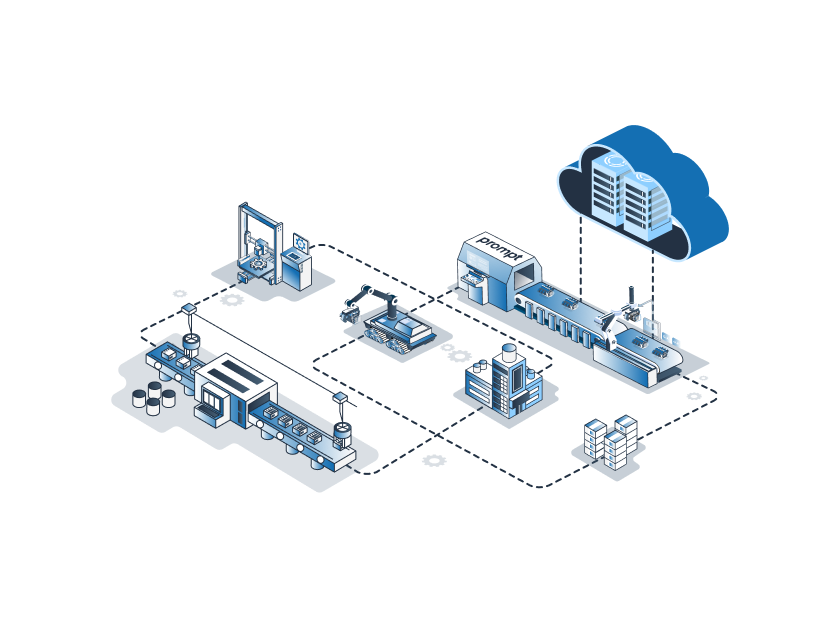The emergence of the COVID-19 pandemic disrupted almost all sectors. Still, on the other hand, it opened a plethora of opportunities to improve the existing business culture by showing us the path of Digital Transformation. Today, the industry stands on the doorsteps of its much-awaited renewal. It is evident that manufacturing leaders have to adopt digital transformation but have to accelerate innovation while managing crucial processes like enhancing capacity without compromising product quality.
Thus, digital transformation is the new focus in the manufacturing industry, and no doubt, effective collaboration will be the best way to keep both things smooth and productive at the same time. However, this will not be easy as workforces have gone and are still mostly remote.
Pandemic Impact:
As the virus blanketed the globe, it became pretty clear that there would be a fight for survival among industries. There would be winners and losers. Before the pandemic situation, the manufacturing sector had been slow in adopting the digital transformation and lacked a data-centric mindset that has already transformed other industries. Even those who embraced multimillion-dollar Industry 4.0 or IoT initiatives were not receiving any excellent results to showcase their efforts. Unfortunately, when the pandemic knocked the globe, resources to support implementations went at the edge.
Not just they lost the data they needed to adapt at the moment but also potential value..
Digital Transformation:
Today the most asked question is why invest in digital transformation at the corporate level when there is no usable data from the factory floor?
Well, Smart manufacturing does not demand to have an entire organization devoted to its success. In manufacturing, it can begin with capturing insights from the very initial operation- the machine assets that make products and people handling the machine. The assets are one of the most significant capital investments for any manufacturing industry, and it produces thousands of data points every second. Still, these valuable data are not captured and analyzed to improve the efficacy leading to no improvement or growth. Today’s factories are based on manual processes that result in massive inefficiencies and disturbs every part of the organization.
Insights along with correct action-driven from this data can lay the foundation for manufacturers to grow their business and stand above the competitors. Even the chances of errors and inefficiency are negligible.
Machine Data Infrastructure:
As we already know, there were many manufacturers, organizations, consultants and system integrators who attempted to rebuild the machine data infrastructure from scratch and produced varying degrees of achievement as a part of large IoT initiatives.
Even while leveraging a horizontal IIoT platform, the whole setup requires months or years. Once it is completed, the mechanism for capturing and contextualizing machine data has to build, and it needs regular maintenance. Not only are the expenses of sustaining these solutions limit, but the missing opportunity and value affiliated with misallocating resources to produce something that already exists causes a competitive disadvantage for the manufacturer.
Accurate real-time data automatically collected and transformed from machine assets produce a solid base for driving bottom-line value. When joined with visibility and actionability via alerts, analytics and automation triggered by the data, one can observe a 15-20% improvement in utilization performance in months.
Once this is over, the value achievement can be fast and multi-directional by integrating the data into other siloed data on enterprise factory and industry systems, i.e. from product designing to production, product quality, maintenance and logistics to run endless automation and accomplishment of exceptional value.
This enables an ecosystem of manufacturers and partners to speed up value attainment and reduce the risk of initiative failure by optimally adjusting the entities having individual skills, in particular IIoT initiatives.
IIoT Ecosystem:
IIoT Ecosystem includes manufacturers, machine builders, machine builder distributors, technology and solution providers, service providers, software providers, system integrators and consultants. Each has its unique skill, expertise, or intellectual property that can be used to drive a successful IIoT initiative. When the resources mentioned above are disarranged or sub-optimized, IIoT initiatives fail to deliver on the insured value proposition or fail entirely.
So, the question is, where should the manufacturer focus? Analytics, including both Machine Learning and Artificial Intelligence algorithms, can be developed and applied at the edge as well as in the cloud using analytics technologies. The correct alignment of skills and technologies produces the optimal formula for the manufacturer’s speedy and regular value generation.
Successful IIoT initiatives need selecting the right technologies and perfect alignment of the different entities in the IIoT Ecosystem that participate in the industry. In the IIoT Ecosystem, the alignment should be done based on each participant’s unique technology, IP and domain expertise to extract maximum benefit and reduce risk.
The emphasis should be on quick data transformation, excellent application, integration and automation into other best factory systems.
Pivot, Respond, Adapt:
As I already shared that many manufacturers suffered a lot during the pandemic times, and no doubt much of that suffering was out of their hands. But who were the ones who surpassed all the challenges and succeeded? Who were winners when the whole world was encountering losses at different levels? Well, the organizations that can pivot, respond and adapt at the tough times. It wasn’t easy, but they were prepared with the data, the tools and the mindset to win.
For manufacturers who had to spend a lot on difficult-to-implement should pump the breaks in favour of vertical solutions that can benefit immediately.
It’s time to switch to the new world of digital transformation. Are you ready for it?

